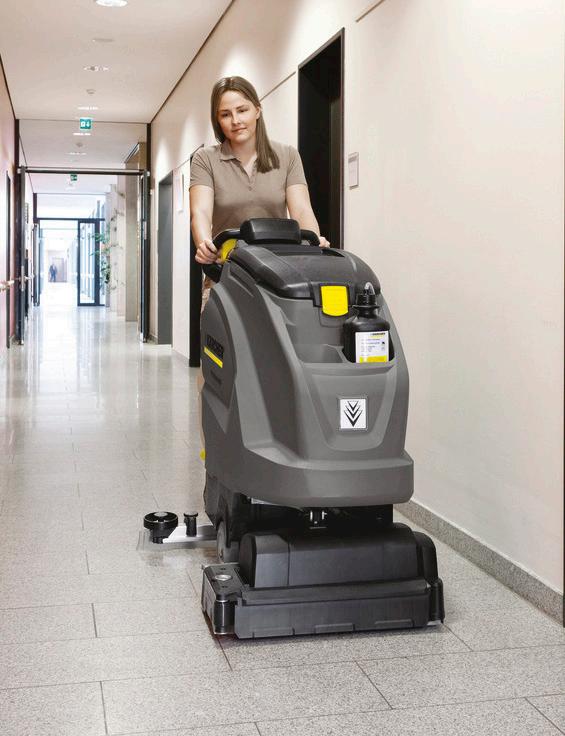
2 minute read
Boosting cleaning productivity and efficiency in healthcare
Matt Gellie, key account manager – public services, at Kärcher UK discusses ways facilities managers can help their businesses to meet cleaning standards in a productive and efficient manner.
Maintaining high levels of cleanliness and hygiene has long been a priority for healthcare facility managers to create a safe environment for patients and staff. From the risk of bacteria proliferating in wards and treatment rooms, to trips and slips caused by spillages and waste in common passageways, to the risks to patients and hospital staff from poorly managed amenities, facilities managers must ensure hygiene standards are consistently met all year round.
Advertisement
The impact of the pandemic has led to increased pressures on facilities managers due to heightened patient sensitivity around what it means for something to be ‘clean’. Patients are increasingly aware of general cleanliness and whether surfaces have been disinfected or sanitised.
This increased awareness has amplified the demand on facilities managers to minimise risks to protect the health of patients and hospital staff. With the same number of hours in the day and more cleaning to be done, it is imperative that effective cleaning measures are undertaken to boost efficiency, minimise disruption and meet high cleaning standards.
Boosting efficiency
To help facilities managers tackle unwanted dirt build-up, Kärcher has devised the PDIR cleaning method. The ‘preventative, daily, interim, and restorative’ cleaning method is a strategic approach to facility cleaning that starts by tackling outdoor pollutants to stop them entering the building.
Traditional intensive and restorative cleaning requires vast amounts of time, energy, chemical usage, and disruption as areas need to be closed off to allow for the process to take place. Instead, by focusing on the P, D, and I of PDIR, cost and time can be saved by implementing regular maintenance training practices that enable facilities managers to tackle dirt head-on by preventing dirt from entering facilities, daily cleaning and disinfection of carpets and hard floors, and interim maintenance to protect appearance.
Minimising disruption
With increased cleaning demands, downtime greatly disrupts cleaning efficiency and places patients and workers at risk from the build-up of unwanted dirt and pathogens. To mitigate this, facilities managers should choose a reliable equipment provider to obtain a fleet of machines that will run 24/7 with minimal breakdown risk.
To support equipment managers, Kärcher has recently extended its servicing model to include video diagnostics where its trained engineers will help guide them remotely through fixing the machine so it can get back up and running again quickly on-site. If it cannot be solved remotely, Kärcher’s engineers will visit the site to fix the machine in person.
Meeting standards
With different teams working to maintain hospital cleanliness through all hours of the day and night, it is important that all staff can deliver a consistent quality of clean. Unique solutions such as the Kärcher Intelligent Key (KIK) system allow users to achieve this as facilities managers can pre-set cleaning modes so that all operators can ensure the same level of cleanliness no matter who is on shift.
Alongside this, it is important to ensure that staff are trained on the latest methods and how to use the machines most efficiently. Utilising training academies such as the Kärcher Academy will allow facilities managers to easily meet their targets through more robust, efficient and productive cleaning.
Keeping up with the demand and increased pressures of hospital and healthcare hygiene is one of the greatest challenges for facilities managers. However, ensuring that they have the right cleaning methods in place, the right equipment and the right training, they can meet these demands both productively and efficiently. WWW.KARCHER.CO.UK











